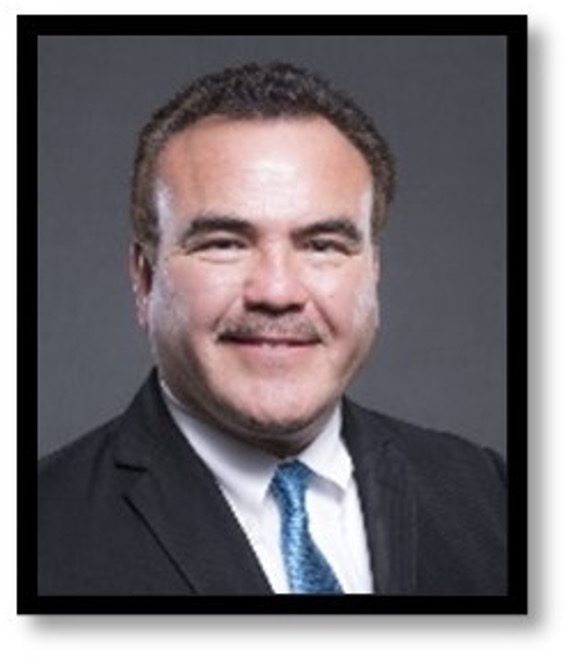With their performance season now underway, the San Bernardino Symphony Orchestra is currently preparing for the first of their Intimate Evening Series concerts. On May 14th at 7:30 p.m., the Orchestra will present An Evening of Chamber Music featuring The Lyris Quartet as well as a performance by members of the Orchestra’s string section.
Noted Music Director and Conductor Anthony Parnther, “The Lyris Quartet is one of the foremost string quartets in the United States and has garnered an international reputation for their innovation and their frequent collaborations with the most highly regarded composers in the world.”
Mark Swed of the Los Angeles Times agrees, describing the ensemble as “radiant… excellent… and powerfully engaged.”
Members of the quartet have won top prizes at the Tchaikovsky International Competition and at the Aspen Music Festival, and the quartet has collaborated closely with composers Krystof Penderecki, Andrew Norman, Oliver Knussen, Steven Mackey, John Adams, Bruce Broughton, Peter Knell, Kurt Rohde, Paquito D’Rivera, Wadada Leo Smith, and Gerard Schurmann. Lyris has appeared throughout North America, Europe, and Asia in a diverse range of ensembles including Grammy nominated groups Absolute Ensemble, and Southwest Chamber Music, as well as in various festivals such as Ravinia, Brahms Festival in Madrid, Music Academy of the West, Banff Centre for the Arts, Czech SommerFest, and the Oregon Festival of American Music.
This season, Lyris was invited by the LA Philharmonic to perform on their Green Umbrella series and on their tribute concert to composer Steven Stucky. They also gave the west coast premiere of David Lang’s “The Difficulty of Crossing a Field”. This year will mark their fifth season as the resident ensemble for the critically acclaimed series Jacaranda: Music at the Edge, and they have recorded for Toccata Classics, ARS, and Naxos. The Lyris Quartet is also the founding resident ensemble of the Hear Now Music Festival which focuses on the music of living Los Angeles composers. As part of this series, they have collaborated with and premiered works by Stephen Hartke, Don Davis, Arturo Cardélus, and Veronika Krausas.
For the Orchestra’s 93rd year, Maestro Parnther created the concept of an expanded subscription season inclusive of three traditional large orchestral concerts at the historic California Theatre, a summer outdoor community concert, and three performances on a smaller stage where patrons can more fully immerse themselves in a single genre of music. These immersive events will be performed at the historic San Bernardino Valley College Auditorium.
The May 14th performance was curated to provide an eclectic and engaging blend of chamber music.
“We collaborated on finding the right program for this occasion and balanced it out to include Classical icons Beethoven and Ravel but also extending into living artists like Billy Childs, James Newton (who will join us at the concert) and Imogen Heap,” explained Parnther.
The Lyris Quartet will open the concert with Billy Childs’ Unrequited. The group previously appeared alongside Childs as part of the LA Phil’s Jazz and World music series at Disney Hall and with Steve Reich at LACMA’s Bing Hall. Lyris will then proceed into Beethoven’s Cavatina from String Quartet No. 13 in B-flat, Op. 130. Following will be Ravel’s four-movement String Quartet in F Major and Imogen Heap’s Hide and Seek, as arranged by Niall Ferguson. Then, under the baton of Maestro Parnther, members of the Symphony’s strings section will perform James Newton’s arrangement of Amazing Grace which was motivated by and dedicated to President Barack Obama and the lives taken in Emanuel African Methodist Episcopal Church in Charleston, South Carolina. Lyris will close the concert with Beethoven’s Allegro Molto from String Quartet No. 9 in C. Major, Op. 59, No. 3.
The addition of composer James Newton, whose work encompasses chamber, symphonic, and electronic music genres, compositions for ballet and modern dance, and numerous jazz and world music contexts, is of particular note. Newton has been the recipient of many awards, fellowships, and grants, including the Ford Foundation, Guggenheim, National Endowment of the Arts and Rockefeller Fellowships, Montreux Grande Prix Du Disque and Downbeat International Critics Jazz Album of the Year, as well as being voted the top flutist for a record-breaking 23 consecutive years in Downbeat Magazine’s International Critics Poll. Newton is also a distinguished professor emeritus at the Herb Alpert School of Music, at the University of California at Los Angeles.
The specific concert venue was selected for a number of reasons. First, the Valley College Auditorium was designed by the same architect – John Paxton Perrine – who conceived the historic California Theatre of the Performing Arts where the Symphony generally performs. Second, like the California Theatre, it is also designated a National Registry of Historic Places site; however, many in the region have not had the opportunity to experience a performance there. Third, the venue’s smaller seating capacity makes it perfect for audience members to experience the music as it was originally designed.
In line with the Orchestra’s mission to provide accessible music and music education, Maestro Parnther sees this as an opportunity fulfill the Orchestra’s decades-old commitment, adding, “Valley College is one of the cornerstones of our community and we are always excited about the opportunity to combine our resources to the benefit of our students.”
Two more such performances will follow this season, each also bringing similarly notable artists to the Inland Empire.
“I am fortunate to have some of the finest musicians in the world as close friends and colleagues,” shared Parnther. “Concerts like these allow us to continue to bring world class talent to San Bernardino to perform for our audiences and collaborate with our great orchestra.”
Observed Orchestra Board of Directors President Dean McVay, “As we anticipate a performance by this very popular quartet will sell out quickly, we encourage everyone to purchase their tickets now while you can.”
Single tickets are available online at www.sanbernardinosymphony.org or by calling the box office at (909) 381-5388. Money-saving five-concert season subscriptions are also available. Box Office hours are 10 a.m. to 2 p.m., Monday through Friday.
Five Season Concerts Remain
A Classical piano event featuring Robert Thies is scheduled for June 11 and a September 10 jazz concert with the Josh Nelson Jazz Quartet will both be performed at the San Bernardino Valley College Auditorium. In between, a community-wide patriotic concert is also planned July 2 outdoors at the Valley College football stadium.
The Orchestra will return to the California Theatre on October 29, 2022 for “Movies with the Maestro” featuring cinema scores including John Williams’ iconic music from E.T. and Star Wars and the Alfred Hitchcock film scores of Bernard Herrmann (Psycho, The Birds, North by Northwest). The season will end December 17, 2022 with Cirque de Noel featuring the internationally renowned Cirque de la Symphonie troupe performing to orchestral holiday classics.
 These appointments were approved by San Bernardino County’s Board of Supervisors on March 29, 2022. At First 5 San Bernardino’s first in-person commission meeting in over two years, Alejandre and Dowdy-Rodgers were sworn in by the organization’s Executive Director Karen E. Scott during the April 6, 2022, monthly meeting.
These appointments were approved by San Bernardino County’s Board of Supervisors on March 29, 2022. At First 5 San Bernardino’s first in-person commission meeting in over two years, Alejandre and Dowdy-Rodgers were sworn in by the organization’s Executive Director Karen E. Scott during the April 6, 2022, monthly meeting. Westside Story Newspaper – Online The News of The Empire – Sharing the Quest for Excellence
Westside Story Newspaper – Online The News of The Empire – Sharing the Quest for Excellence

